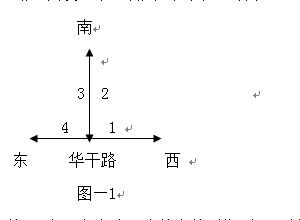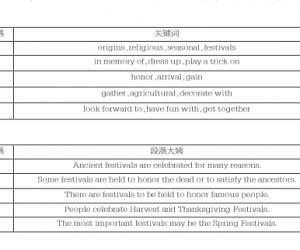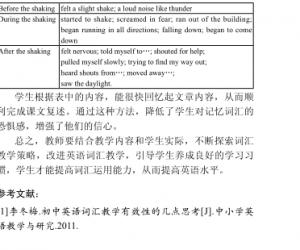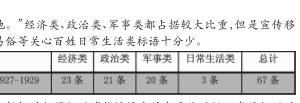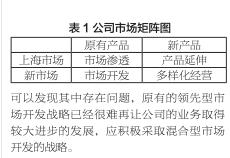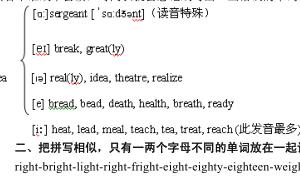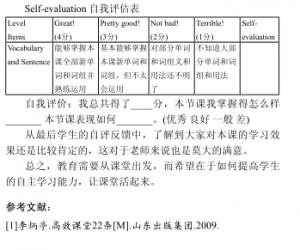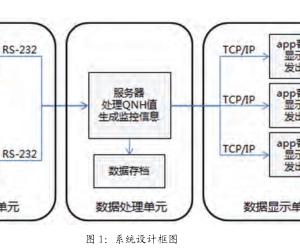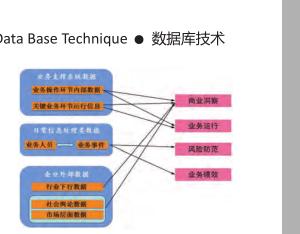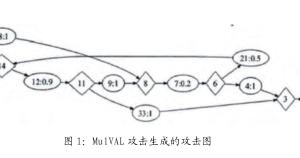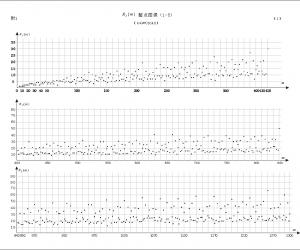An Analysis of the Language Features of Hemingway’s A Clean, Well-Lighted Place
收藏
打印
发给朋友
发布者:lunwenchina
热度0票 浏览242次
时间:2019年12月13日 10:33
Gannan Normal University/Liang Yuan
【Abstract】 Hemingway is a world famous master for hisunique writing style featured by simple words, short and concisesentences. This kind of style is represented in A Clean, WellLighted Place. The ingenious use of linguistic devices such assimple and terse language style, the ironic tone and repetitionmakes the short story become one of Hemingway’s mostpopular masterpieces .
【Key words】 Hemingway; simple words; ironic tone; repetitionIntroduction
Ernest Hemingway is a famous novelist of the 20th centuryin American history. Compared with the popular tedious style atthat time, Hemingway’s style was fresh and simple, which wascommended by the majority of scholars later. A Clean, Well-LightedPlace has become one of his most representative short stories.
Just a few more than one thousand words, the writer depicted acombination of dynamic and static image: Late at night, leaves wereswaying in the shadow outside; inside of the cafe, an old customerwas bending his head to drink; two waiters —a young and an oldwaiter were looking at the street out of the window while talkingabout the story happened in the lonely elderly customer.
1. Simple and terse language style
Concise and simple are the most striking features ofHemingway's novel language. He believes that the less words, thebetter. Hemingway was quite stingy in his description. “I alwaystry to write on the principle of the iceberg. There is seven eighthsof it under water for every part that shows.” (Zhai,1994:361)He often use simple and short sentences to express his feelings.
Hemingway’s aim and achievement were to convey his concernsin a prose style built from what was left after eliminating all thewords one “could not stand to here” .(Baym,1985:1685) Pleaselook at the opening part of the story: “It was late and every onehad left the cafe except an old man who sat in the shadow theleaves of the tree made against the electric light. In the day timethe street was dusty, but at night the dew settled the dust and theold man liked to sit late...”
Just a few words, without any complex sentences, it is easyfor readers to know the time, place and characters of the story.
The writer lightly sketched out a picture of a lonely people whowas drowning his sorrows in wine.
2. The ironic tone
In contemporary criticism, tone is used to designate the wayin which the author’s attitudes are conveyed through languagewithout being presented directly as statement in a literary work.
(Yan,1990:62) When reading Hemingway’s novel, whatimpresses reader most is his calm and objective tone. In orderto achieve objective narrative effects, Hemingway weakens thenarrator’s voice intentionally. Nevertheless, any writer willinevitably show some emotions to the characters or events in hiswork. Hemingway is no exception. A Clean Well-Lighted Placeimplies the writer’s ironic tone, which can be discerned throughthe dialogues between the two waiters:
“Why didn’t you let him stay and drink?” the unhurriedwaiter asked. They were putting up the shutters. “It is not halfpast two.” “I want to go home to bed.” “What is an hour?”
“More to me than to him.” “An hour is the same.” “Youtalk like an old man yourself. He can buy a bottle and drink athome.” “It’s not the same.”
From the remarks of the younger waiter, we can infer that hewas unsympathetic and selfish. On the contrary, the older waiterwas full of sympathy with the old man. He could understand the oldman because he has the same feelings of loneliness and emptinessas the old man. He knows everyone would be old one day. In factthis dialogue implies the author's sarcastic tone: the young waiterwill be also old one day, and he also can not escape the fate ofloneliness and emptiness from which the elderly are suffering. Theold man’s today is the tomorrow of the young waiter.
3. The use of repetition
In A Clean Well-Lighted Place, many key words are repeatedagain and again: shadow, clean, light, late, nothing, nada, etc. Themost obvious repetition is the narration of the older waiter’snothing feeling: “Some lived in it and never felt it but he knewit all was nada y pues nada y nada y pues nada. Our nada whoart in nada, nada be thy name thy kingdom nada thy will be nadain nada...Hail nothing full of nothing, nothing is with thee.”
After reading this passage, except the two words “nada” and“nothing” , readers may be in a confused mind. In this paragraph,the word “nothing” appeared six times. Moreover, he usesword “nada” (twenty-one times) which is similar meaning to“nothing” . The author deliberately put this passage at the end ofthe novel, which strengthened the theme of nothingness.
Conclusion
In conclusion, Hemingway is a world famous master inliterature for his unique writing style featured by simple words,short and concise sentences.For Hemingway’s works, only byrepeated reading and chewing can we taste a variety of flavors andfully dig its deep implication.
References:
[1]Baym,Nina et al,comp.The Norton Anthology of AmericanLiterature 2 ed.Vol.2.New York:Norton,1985.
[2]Yan Zhongzhi.An Introduction to Literary Criticism.
Chongqing:Sichua International Studies University,1990.
[3]Zhai Shizhao.Selected Readings in American Literature.
Kaifeng:Henan.University Press,1994.





